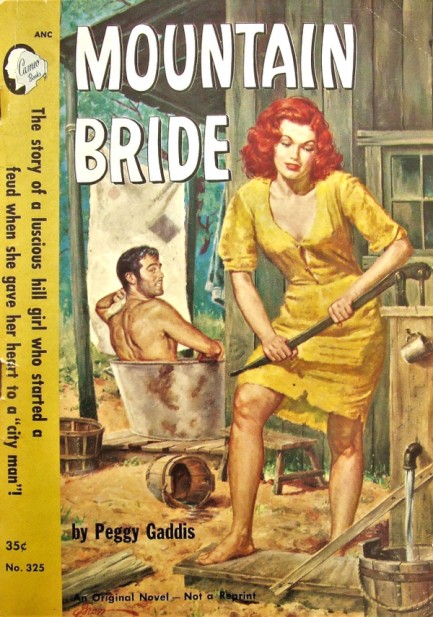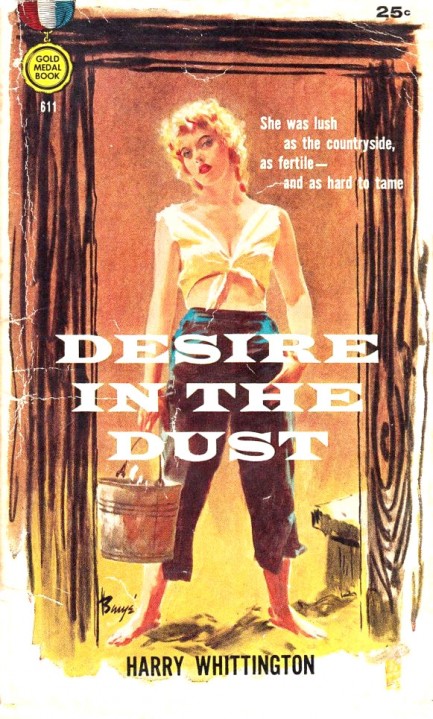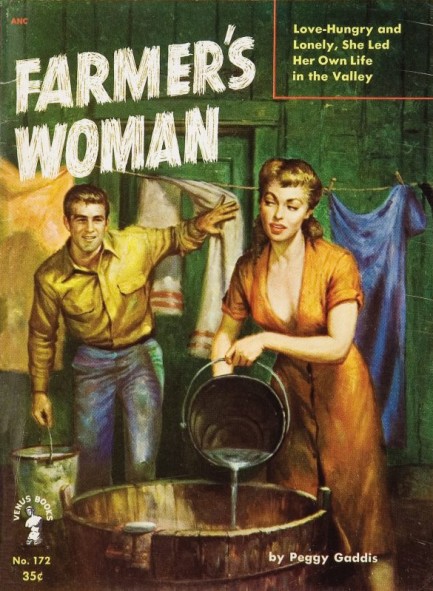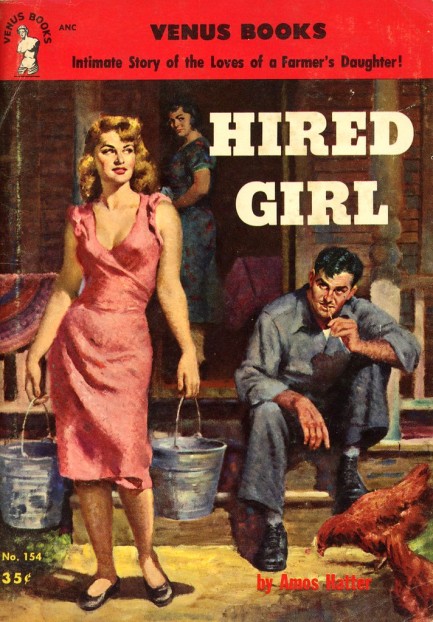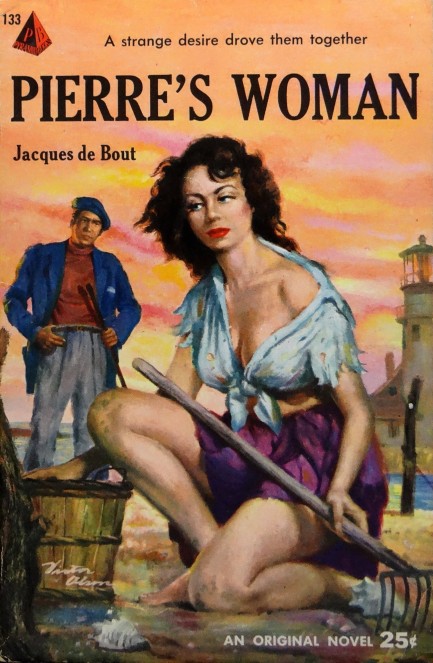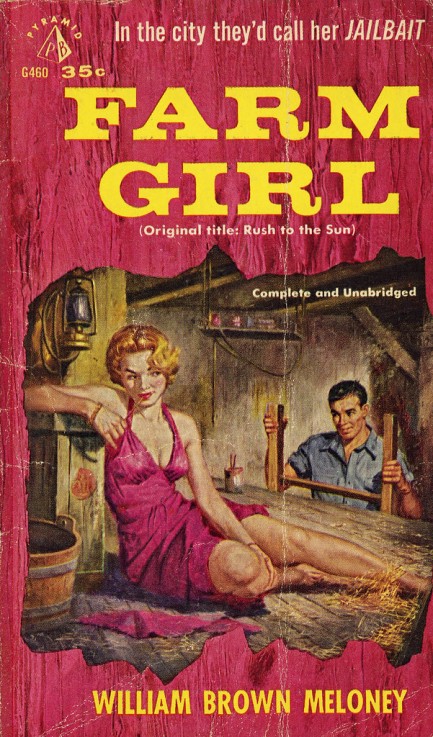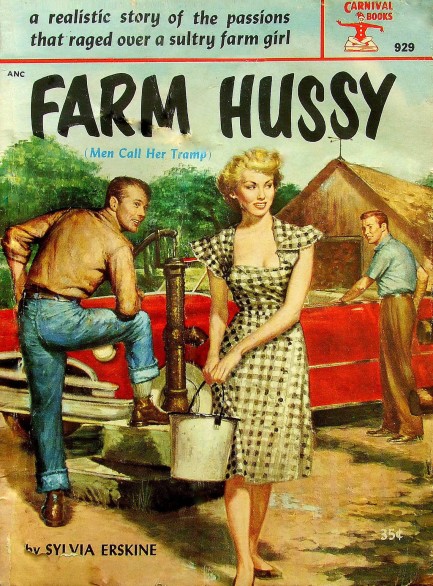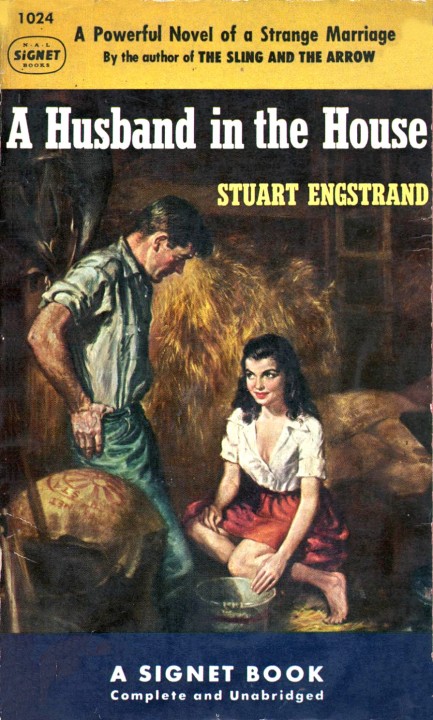 Grand theft auto, first degree murder, and concealment of a corpse, eh? Well, you've paid your debt to society. Hop in! 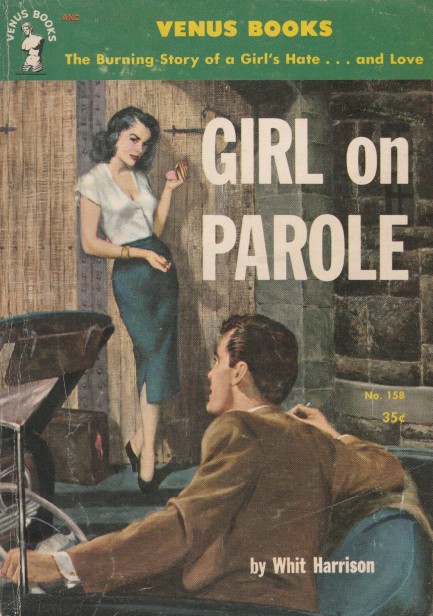 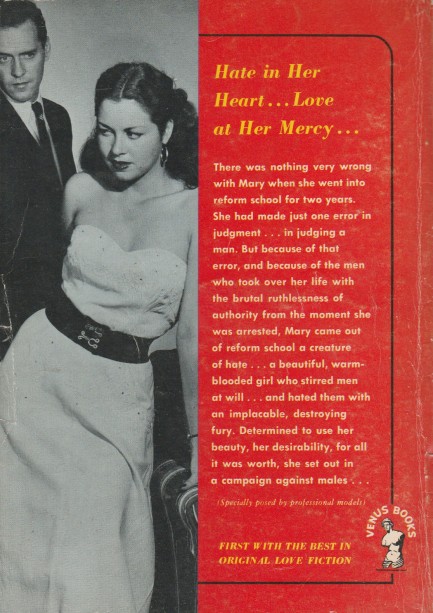
Above: the front and rear covers of Whit Harrison's Girl on Parole, for Venus Books. We would've bought this, but the seller was asking more than three... Excuse us for second—Hahahahahaha..! *wiping tears away* Sorry, he was asking more than three-hundred dollars. We buy a lot of books but you know our rule—never pay more than it costs for a train to Paris. Remember, we live in Spain, so we're talking thirty euros. We've gone as high as forty a few times, but that's our absolute ceiling for a single paperback. Nine times out of ten we pay seven or less. Anyway, Girl on Parole is from 1953 and the art is uncredited, but it's probably by Herb Tauss, who was painting for Venus during the period and whose style is a perfect match. Check what we mean here and here.
 Just look at all of you—up and about and alert. You've really regained the will to live since I started. 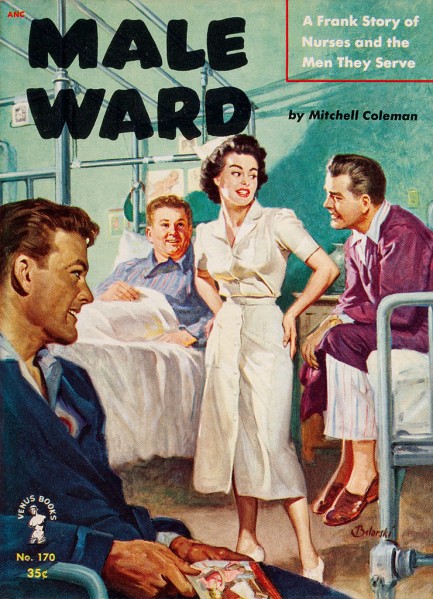 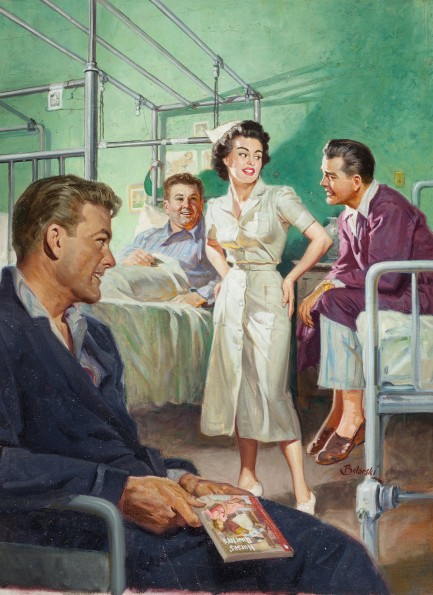
Not only do the patients in the male ward look better lately—if they keep making this kind of progress they'll soon brawl over the nurse and be pronounced 100% normal. Physically, anyway. Obviously, you have superior cover work here, and that's because it was painted by Rudolph Belarski, one of the can't-miss illustrators of the mid-century era. He painted this one for Venus Books and Mitchell Coleman, aka William Neubauer, and the copyright is 1954. We have Belarski scattered throughout the website, particularly in men's magazines and cover collections, but to see a few interesting individual entries, you can go here, here, here, and here. Also, note that the patient in the foreground is holding a paperback. It's Sylvia Erskine's 1954 novel Nurses' Quarters, for which Belarski also painted the cover. How meta of him. Is that meta? Let's just call it self-referential.
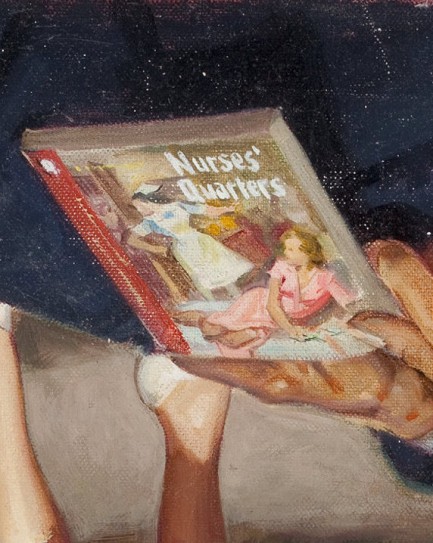
 Finally! I've been waiting here an eternity for a man who looks like a success. Wanna get married? 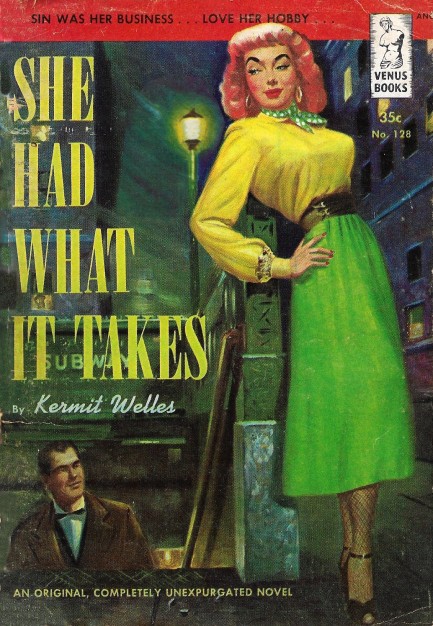
This cover for 1951's She Had What It Takes by Kermit Welles is uncredited but it was definitely painted by Rudy Nappi, an amazing stylist, whose work is not always immediately identifiable due to the variations he showed when painting femmes fatales. The bangs and heavy eyebrows you see on this one mark her as Nappi all the way, but often his work resembled that of George Gross and Howell Dodd. We've never seen a less-than-excellent cover from him, though, and this one is especially good.
The story deals with a smalltown journalist named Jan Flowers who wants to make it to NYC, have her own society column, and marry rich. She dumps her true love Tony Bennett (not that one), jets to the Big Apple, and promptly finds every worm. The worst of her problems is probably that the cousin she's living with is consorting with a local gangster who's always in the apartment giving Jan the eye and threatening to take her by force. Or maybe the worst of her problems is the blackmail scheme she gets involved in to advance her career. Or maybe it's the employer who wants to play slip and slide and makes Jan feel that if she does he'll open doors for her.
Well, take your choice. The point is New York is can be rough on a single girl. But She Had What It Takes, while being a drama and a quasi-crime novel and a morality play about what can happen when you ride the sell-your-soul train, is also largely a romance, and a particularly saccharine one, which means things won't end up too terribly no matter what kind of bonehead decisions Jan makes. Despite the lack of real suspense, overall the book was alright. Ultimately lightweight, but readable and reasonably fun. For what we paid, we can't complain.
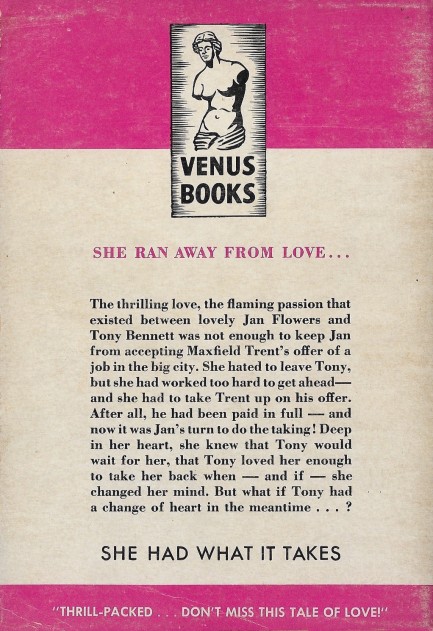
 Entry by special invitation only. 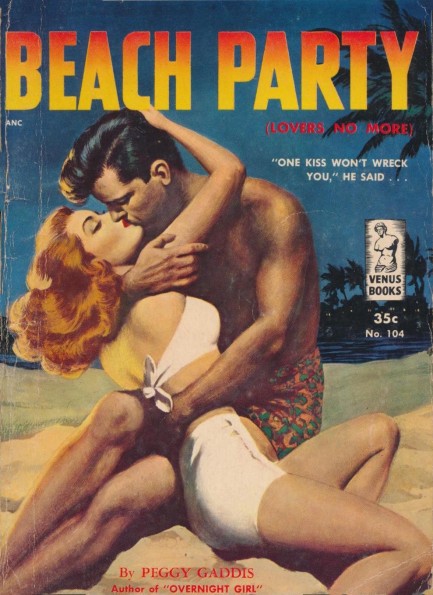
Above, a really nice cover for Beach Party by Peggy Gaddis, aka Joan Sherman, Joan Tucker, Pearl Gaddis, Peggy Dern, et al. This was published in 1950 by Venus Books, and the art is uncredited.
 All these books are on our bucket list.
When you look at paperback covers every day it's interesting the common elements you notice. Of late, we've noticed buckets. They pop up on backwoods and rural sleaze novels, usually in amusing fashion, often in the possession of hardworking women going about difficult chores while nearby men don't do dick. We'll just tell you—that's not the way it works around our place.
 I used to be over easy, but that was during my wild college years. 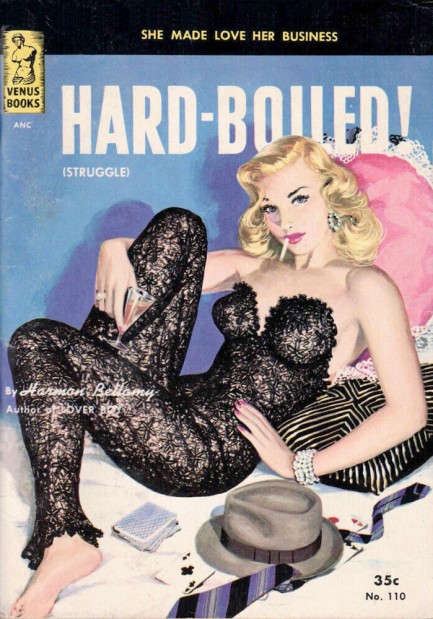
Above, a beautiful 1950 Venus Books cover for Hard-Boiled, originally published in 1935 as Struggle, written by Harmon Bellamy, who was in reality Herman Bloom. The book deals with an embittered misogynist who meets up with a hardboiled woman of low repute, and finds his feelings for her evolving from contempt to a growing desire to peel her and have her for a meal. The main attraction here, though, is the art by George Gross. He was good at everything, but in the area of dressing his women, he was top of the heap. This lacy bodysuit is perfect. For more examples of Gross fashions, check this collection, especially the top example.
 But I feel absolutely miserable, nurse. And you know misery loves company. 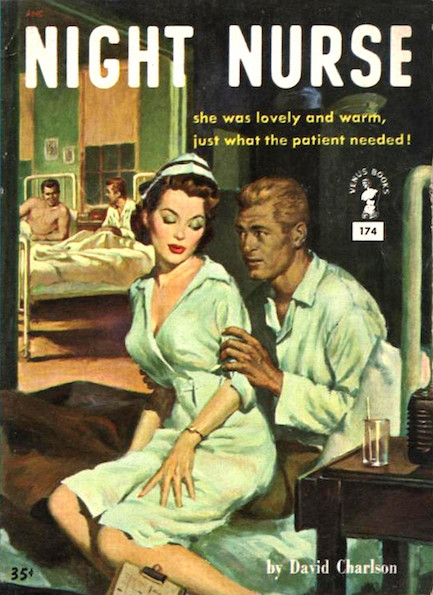
Above we have an addition to our ongoing collection of nurse/doctor covers, 1953's Night Nurse by David Charlson for Venus Books, which was a branch of Star Guidance, Inc. If you seek to buy this, you'll find it priced at up to $100, which is enough to put you into shock, and then you can have a night nurse of your own. We don't know about you, but we'll content ourselves with this nice scan. The art is uncredited. See more guaranteed-to-amuse nurse and doctor covers here, here, here, here, here, and here.
 I've got two days. That's not much time to waste all my pay on impersonal professional sex, so let's get started. 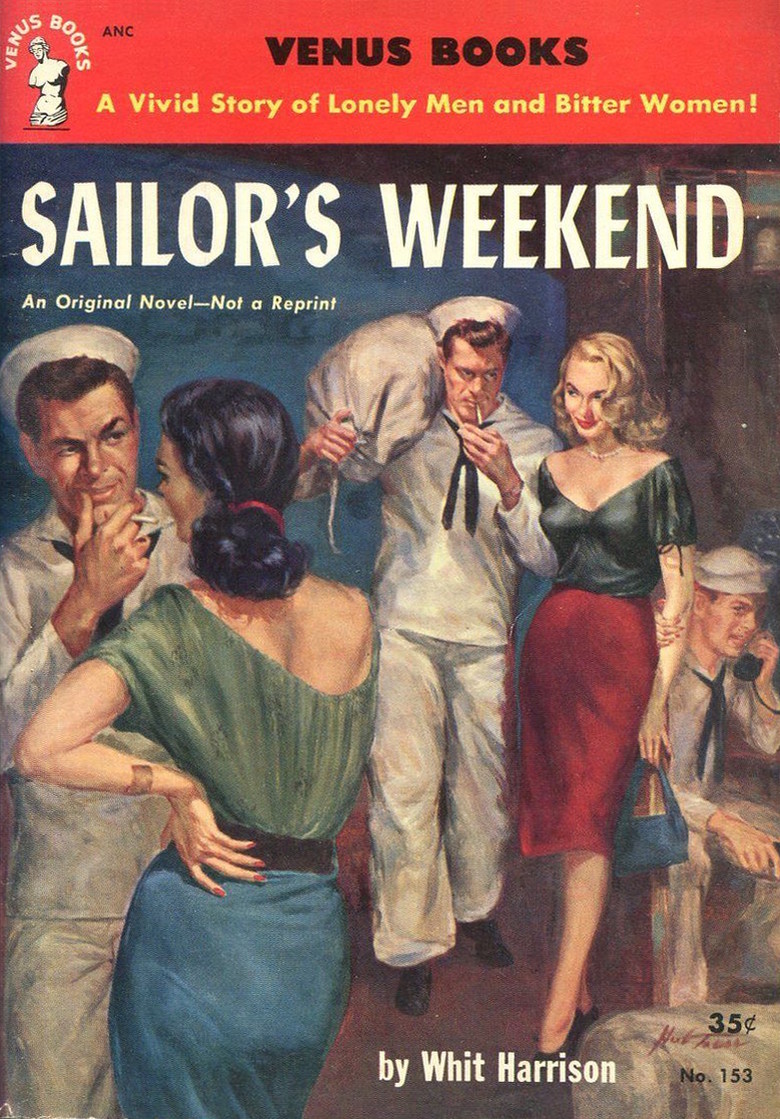
Would the global sex-for-pay industry even survive without the military? We seriously doubt it. If you're partnered up with a military man, just know he's done the above, multiple times, no matter what he may tell you. Whit Harrison's 1952 novel Sailor's Weekend deals with three navy guys set loose in San Francisco, which was an entirely more lawless place back then as far as the sex industry goes. The art on this is by Herb Tauss, who we did a small feature on a long while back. You can check that out here.
 Okay, he's taken the bait. We'll let him get close, then you distract him by puking on his coat, and I'll take him down. 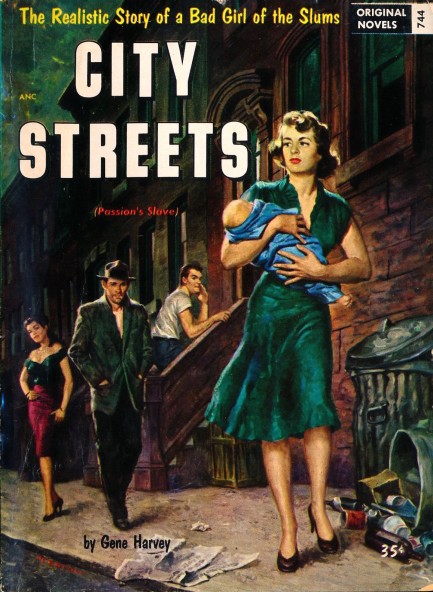
City Streets was written by Gene Harvey, aka Jack Hanley, who we last saw authoring 1942's Leg Artist. Harvey was a literary vet who authored such memorable lite-sleaze epics as She Couldn't Be Good, A Girl Called Joy, and Stag Stripper. City Streets is from 1954 and apparently his various publishers liked it so much they issued it four times—Venus Books put it out in 1950 as Cutie, Exotic Novels released it as Passion's Slave the same year in an illustrated format, Original Novels published it as what you see above, and finally Star Novels published it, also as City Streets, in 1955. These companies were closely related, but that's still a lot of mileage from one book. It explores the trials and tribulations of beautiful young Dru, “a bad girl of the slums,” who's gotten her education from the school of hard knocks—i.e. from Chicago's south side. The cover art on this is by Rafael DeSoto, who cleverly hid his signature in the gutter. It's a really beautiful effort from him, certainly one of his best. We've featured him often, so just click his keywords below if you want to see more.
 Can I interest you in a quick hay ride? 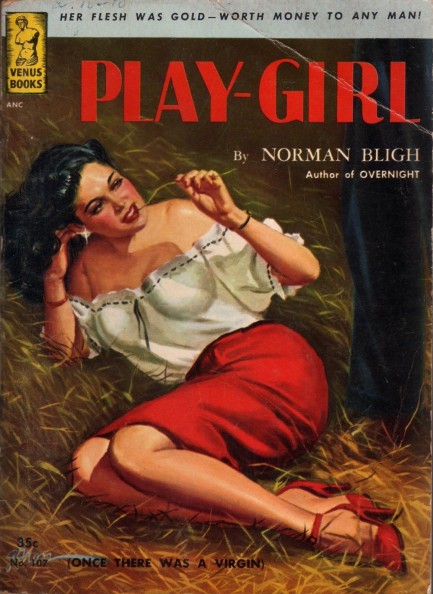
Above, another installment of art from the great George Gross, with cover work for Norman Bligh's Play-Girl, 1950, from Venus Books. See more here and here.

|
 |

The headlines that mattered yesteryear.
2003—Hope Dies
Film legend Bob Hope dies of pneumonia two months after celebrating his 100th birthday. 1945—Churchill Given the Sack
In spite of admiring Winston Churchill as a great wartime leader, Britons elect
Clement Attlee the nation's new prime minister in a sweeping victory for the Labour Party over the Conservatives. 1952—Evita Peron Dies
Eva Duarte de Peron, aka Evita, wife of the president of the Argentine Republic, dies from cancer at age 33. Evita had brought the working classes into a position of political power never witnessed before, but was hated by the nation's powerful military class. She is lain to rest in Milan, Italy in a secret grave under a nun's name, but is eventually returned to Argentina for reburial beside her husband in 1974. 1943—Mussolini Calls It Quits
Italian dictator Benito Mussolini steps down as head of the armed forces and the government. It soon becomes clear that Il Duce did not relinquish power voluntarily, but was forced to resign after former Fascist colleagues turned against him. He is later installed by Germany as leader of the Italian Social Republic in the north of the country, but is killed by partisans in 1945.
|

|
|

It's easy. We have an uploader that makes it a snap. Use it to submit your art, text, header, and subhead. Your post can be funny, serious, or anything in between, as long as it's vintage pulp. You'll get a byline and experience the fleeting pride of free authorship. We'll edit your post for typos, but the rest is up to you. Click here to give us your best shot.

|
|













